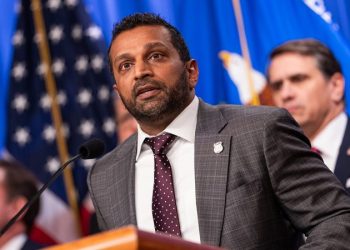Emergency designations were originally intended as a narrow exemption to spending limits to provide for true, unforeseen crises. Over time, Congress has increasingly come to treat emergency designations as a pressure valve to evade spending limits and fund non-emergency, routine government operations. Preventing further abuse of the emergency designation—and the fiscal harm that comes with it—starts with revitalizing Congress, embracing oversight, and empowering individual members with the procedural tools needed to push back against excessive and phony emergency designations.
Congress’s increasing reliance on the emergency designation to bypass budget limits has serious fiscal consequences, adding up to $15 trillion to deficits over just the past 35 years—close to half of the entire public debt. Lawmakers can reclaim control by ensuring emergency definitions are adhered to, emergency spending is offset, and transparency and congressional oversight are increased. On October 7, I spoke at a Hill briefing with Steve Ellis (President of Taxpayers for Common Sense), Rachel Snyderman (Bipartisan Policy Center), and Romina Boccia about how Congress can reclaim control of the emergency spending process. You can watch the event video here.
Here are some highlights from our conversation.
Erosion of Fiscal Space
According to the Congressional Budget Office, debt surged during the pandemic as a result of emergency spending and is projected to continue growing rapidly over the coming years. By 2027, the US is projected to exceed the World War II record-high debt-to-GDP ratio of 106 percent. By the 2050s, debt-to-GDP will soar past 170 percent, a wholly unsustainable trajectory. Concerningly, this already dire debt projection does not assume the very realistic possibility of the US responding to another war, pandemic, or recession.
Part of putting our fiscal house in order must involve reforms to the emergency spending process, lest it further accelerate our fiscal decline and constrain the government’s capacity to respond to real future emergencies. As BPC’s Rachel Snyderman explained,
It’s a big chicken and egg problem. This has to do with our ability to respond to unknown unknowns. If we don’t have our fiscal house in order and we’re unable to respond to the next pandemic or global adversary, that’s a real concern…. We haven’t gotten here because of one party’s successes or failures. This is a composite of choices made by administrations and Congresses of both parties over the past decades.
Improving Disaster Policy
Disaster funding exemplifies many of the problems typical of emergency spending. As Steve Ellis explained:
There is this steady buzz of disaster and emergency spending that goes on every single year when maybe we don’t need it or maybe we could’ve budgeted for it and it doesn’t have to be an emergency. One thing that we do know is that emergency spending legislation catches freeloaders. Once a special interest sees that legislation moving, then other things start jumping onto that same gravy train going through the Capitol Hill station, increasing the spending we see.
Part of the challenge, too, is that overreliance on federal disaster aid can misalign incentives, making disasters more devastating and costly. A more responsible disaster framework would involve clearer thresholds for what qualifies as a disaster, tighter controls on how money is spent, as well as states and private entities bearing a larger share of the responsibility.
Revitalizing Congress
The present fiscal challenge and the abuse of the emergency process are problems of Congress’s own design. Over the decades, Congress has delegated away its own responsibilities, granting more and more power to the executive branch. Today, the president possesses a laundry list of extraordinary powers that have been invoked by both Democratic and Republican presidents to pursue partisan political priorities. At the same time, Congress has largely abandoned responsible budgeting, passing deficit-busting packages year after year.
During the panel, Steve Ellis introduced the idea of “Making Congress Great Again,” with the core theme being that only a more energetic and proactive Congress can address problems stemming from an institution plagued by blame shifting and a shirking of responsibility.
Getting from point A to B is easier said than done, but part of the strategy must involve bipartisanship and equipping individual members with the procedural tools to push back against irresponsible spending (and irresponsible leadership). Emergency spending should be the exception, not the rule.
To that end, I’ve compiled a list of promising legislation from both Democrats and Republicans that takes steps to improve the emergency response process. Some of these ideas, such as creating a mechanism to force offsets for emergency spending, would mark a significant departure from the status quo, meaningfully improving a budget process that otherwise often greenlights emergency spending abuse.
Other changes, such as strengthening transparency measures, represent smaller improvements to the existing emergency process but still merit consideration, particularly given the bipartisan attention these reforms tend to receive.
The purpose of reforming the emergency spending process is not to eliminate emergency spending wholesale but to return it to its original purpose. Restoring congressional budgeting and oversight today is the most effective way to ensure a fiscally responsible response to the next major emergency.












